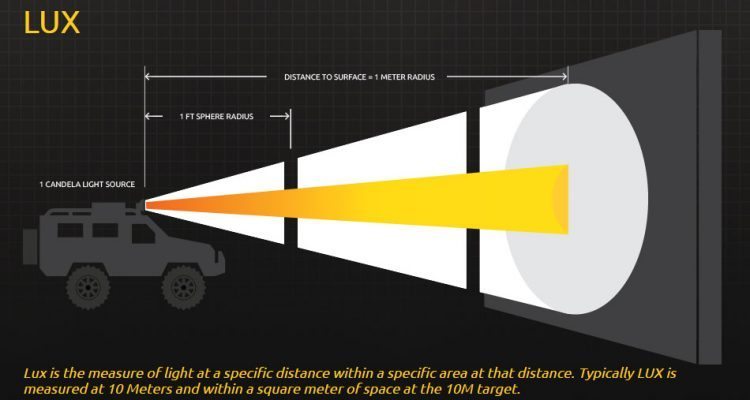

For example, landing light A has a low lux measurement. Lux factors in the assembly’s efficiency at distributing light to a specified area–in this case, the runway. A landing light might have an insanely high Lumen count, but that doesn’t mean it will have high Lux levels. The Lumen measurement does not change, of course. As you descend and get closer to the runway, the runway gets brighter, and your landing light’s lux reading increases. Imagine your final approach to the runway at night. By definition, Lux is “a unit of illumination equal to the direct illumination on a surface that is everywhere one meter from a uniform point source of one candle intensity or equal to one lumen per square meter.” The closer the surface to the light source, the higher the lux reading. Lux tells us how much light actually falls on a surface from a given distance.

This issue is why we prefer to highlight (no pun intended) Lux and Candela. As a result, Lumens do not tell you the actual, real-world effective output of the light assembly–especially when factoring in the assembly’s electrical efficiency, lens clarity, distance from the runway, presence or absence of daylight, and so on. Lumens refer to the potential amount of light emitted from the source area in an ideal world, based on each individual LED chip's rating multiplied by the total number of LED chips in the light assembly. The issue with selecting an LED based only on its Lumen count is that the measurement only paints a theoretical picture of the LED’s performance.

Lumens are “a unit of luminous flux equal to the light emitted in a unit solid angle by a uniform point source of one candle intensity.” Lumens tell us how much light a light source should emit in the immediate area around it. LIGHTS WITH THE MOST LUMENS ARE THE BEST, RIGHT?


 0 kommentar(er)
0 kommentar(er)
